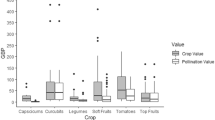Abstract
Rural common property resources (CPRs) in dry tropical areas of India form an important part of people's livelihood strategies, to adapt to harsh, stressful and high risk bio-physical conditions. However, despite their utility and contributions, CPRs have been neglected and declined in the recent decades, following economic, demographic and institutional changes. This has led to community's general disregard of rapidly degrading CPRs. Despite this general trend the CPRs are being productively rehabilitated by small user groups through focusing on specific CPR units in place of addressing the aggregates of CPRs. The paper reports this change by synthesizing the information collected from over 80 villages during 1982–85 and revisits during 19937–2003 to some of the earlier studied villages, in seven states falling in arid and semi-arid regions of India. The paper suggests the need for using the disaggregated approach to complement the usual aggregated approaches for better understanding of the dynamics of CPR change and their better management under the changing circumstances.
La question des ressources rurales de propriété commune (RPC) en zone tropicale sèche en Inde constitue un aspect essentiel des stratégies de subsistance des populations de ces régions. Cependant, en dépit de leur rôle et de leur utilité, les RPC ont été négligées et ont eu tendance à décliner au cours des dernières décennies. Ce qui a conduit à un désintérêt de la part des communautés et à leur rapide dégradation. Malgré cette tendance générale, les RPC sont en train d'être réhabilitées de façon rentable par de petits groupes d'usagers qui s'intéressent à des unités spécifiques plutôt qu'à de vastes RPC. L'article montre ce changement grâce à une synthèse d'informations collectées dans plus de 80 villages entre 1982 et 1985 et lors de nouvelles visites sur la période 1993-2003 dans quelques-uns de ces villages, dans sept Etats des régions arides et semi-arides de l'Inde. L'article suggère la nécessité d'utiliser une approche désagrégée en complément des approches globales habituelles afin de mieux comprendre les dynamiques de changement des RPC et de mieux les gérer dans un contexte changeant.
Similar content being viewed by others
Author information
Authors and Affiliations
Corresponding author
Rights and permissions
About this article
Cite this article
Jodha, N. Rural commons and livelihood strategies in dry regions of India. Eur J Dev Res 20, 597–611 (2008). https://doi.org/10.1080/09578810802464896
Published:
Issue Date:
DOI: https://doi.org/10.1080/09578810802464896




